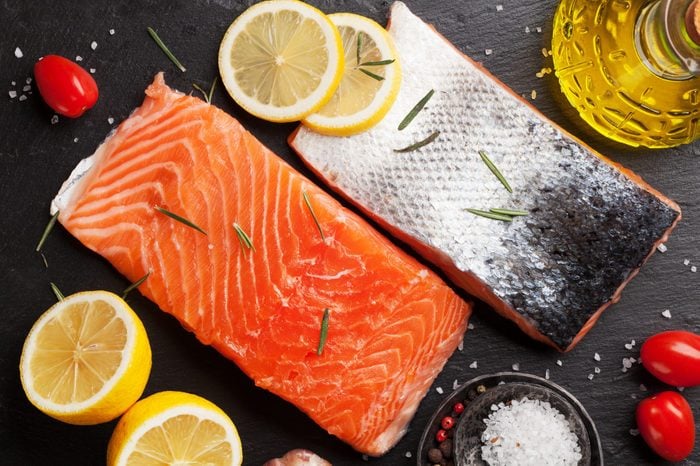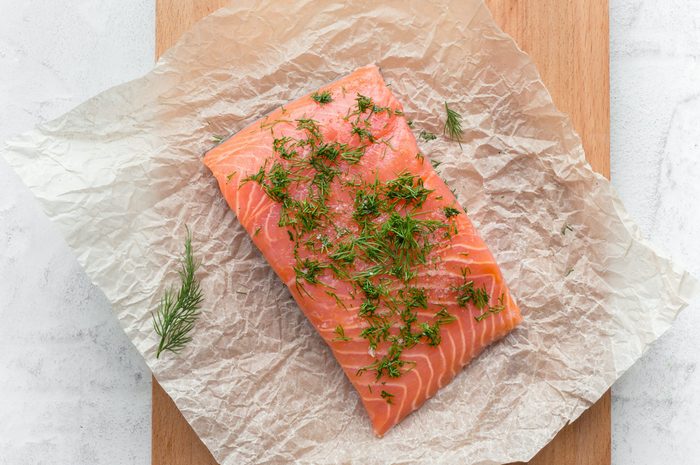
Atlantic Salmon
Also known as sea run salmon, kelts or black salmon, there are three types of wild Atlantic salmon: North American, European and Baltic. Wild North American salmon isn’t commercially fished because of their endangered status. If you’re buying Atlantic salmon in the United States, expect it to be farmed. This fish has a mild flavor and light pink color, and it works really well in any of our easy salmon recipes.
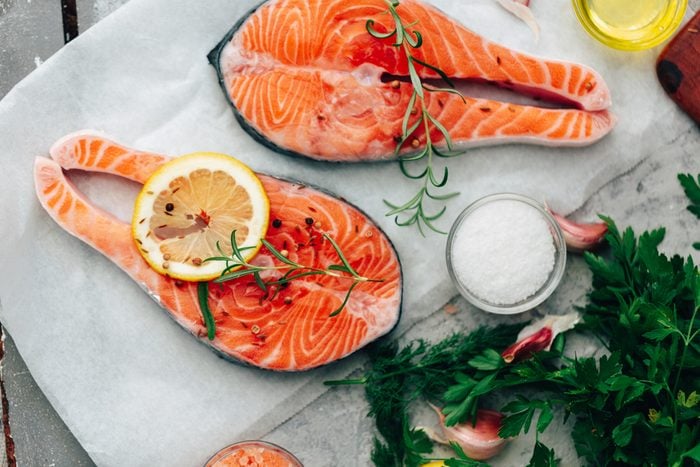
King Salmon
Also called chinook salmon, king salmon is the largest of the Pacific salmon. It’s prized by chefs and home cooks everywhere for its hight fat content and silky texture. Because it’s generally thicker, it’s a good cut for oven-roasted salmon in a cast-iron pan. Once you’ve nailed the basics, there are plenty of baked salmon recipes you’re going to love.
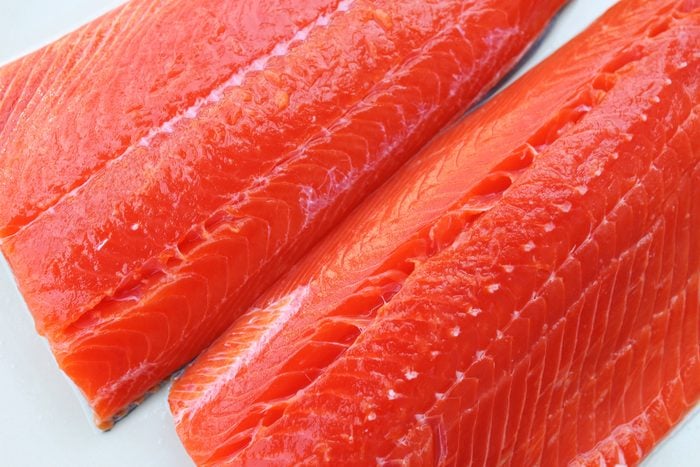
Sockeye Salmon
Also called red salmon, sockeye salmon is stronger in flavor and lower in fat than other varieties. You can serve it raw, smoked or grilled, and it makes great salmon burgers too. Because it’s leaner than other types of salmon, sockeye is great for something like salmon en papillote (baked in paper), which helps it retain some moisture.
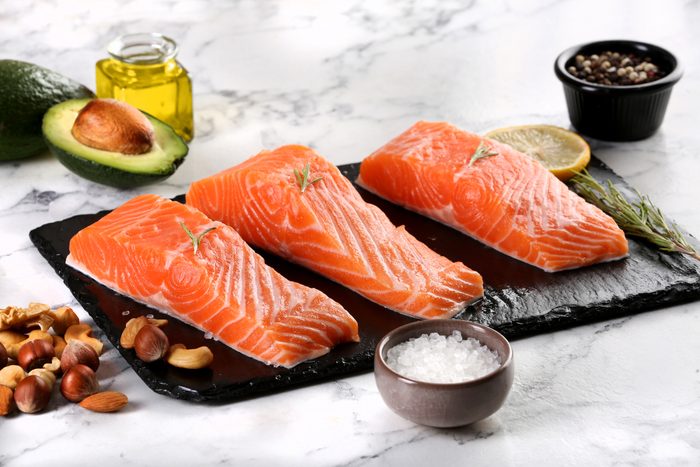
Coho Salmon
Northwestern coho salmon are threatened under the Endangered Species Act due to commercial overfishing and habitat loss, but several types of wild-caught coho are sustainable. Also called silver salmon, coho salmon has a mild taste, a firmer yet delicate texture and medium fat content. Some consider this a good fish for salmon newbies! They’re smaller than king salmon, and they work really well for cedar-plank grilling. But they’re equally good for poaching or roasting whole.
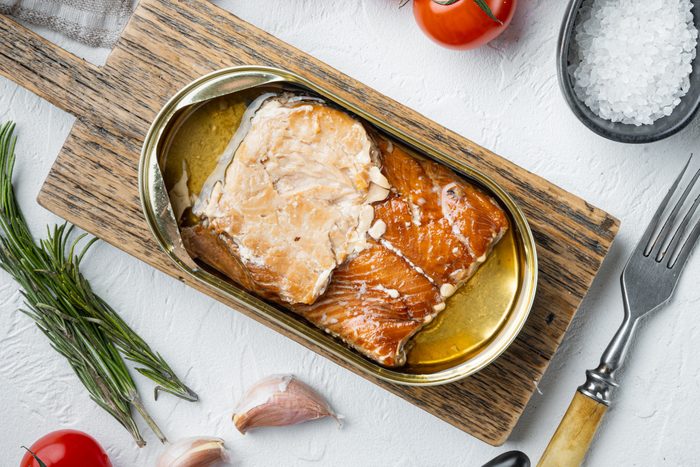
Pink Salmon
Pink salmon are usually canned. The wild-caught fish weighs less than six pounds, and the flesh is lean, light colored and mild tasting. Canned pink salmon has a ton of nutritional value, especially when used in salads and salmon cakes. Try it in our air-fryer salmon patties for a light meal.
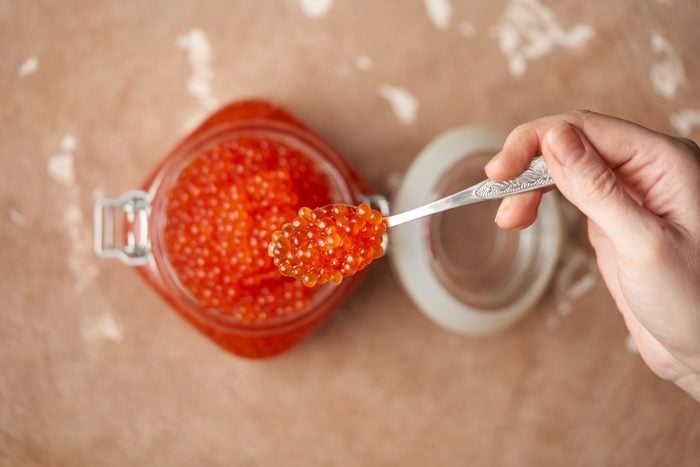
Chum Salmon
Also known as silverbrite, keta or dog salmon, chum salmon is a popular source of salmon roe, which can be used as caviar. You’re more likely to see it listed as ikura on the menu at your favorite sushi bar. The fish is generally a smaller species, with a pale to medium-red flesh and lower fat content. If you can get your hands on chum salmon fillets, they’re as good in any recipe as other types of salmon. Or try the roe on crispy potato pancakes with creme fraiche and chives.
FAQ
What is the best type of salmon to eat?
The best type of salmon mostly depends on what you’re looking to get out of it. If you’re looking for the healthiest option, king salmon should be your top choice. If you’re looking for more affordable and readily available types of salmon, opt for farm-raised Atlantic. For the easiest option that doesn’t even involve cooking, look for canned pink salmon. You can use it in salads, turn it into burgers or bake it into a frittata.
Which salmon is the healthiest?
Usually, wild-caught fish are the more sustainable and healthy option because they’re higher in minerals and lower in saturated fat. When it comes to the healthiest salmon, wild-caught Pacific varieties like king salmon will be your best choice. King salmon is high in omega-3 fatty acids and a wonderful source of protein. Sockeye, another Pacific salmon, is lower in healthy fats, but high in vitamin B12 and protein.
Also, don’t forget to explore these salmon recipes for diabetic people.
